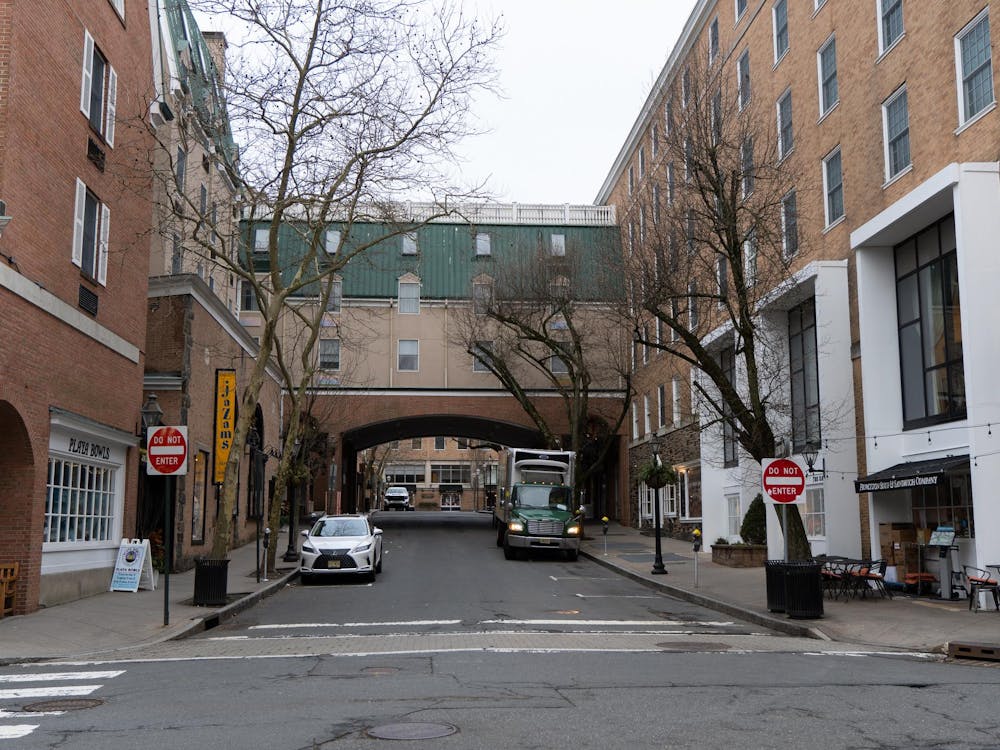While certain pieces of furniture around the University’s campus have a list price of several thousand dollars and others are listed as several hundred, the University typically receives a discount of 30 to 40 percent compared to showroom prices, University Architect Ron McCoy GS ’80 said.
McCoy noted that these list prices do not reflect the discount the University receives from retailers.
He explained that the University bids all furniture, meaning that they appeal directly to the sellers for deals and can essentially get discounts on every piece of furniture because they are either returning customers or making a bulk order. While furniture can be expensive, there are limits, McCoy said.
“We set ourselves a budget and then we work within that budget,” McCoy said. “I would say we stay within the limits that we give ourselves. There are so many different components in furniture, you have a lot of options to invest in one area and be more economical in another.”
For example, the University may purchase hundreds of cheaper chairs at around $200 each while only purchasing handfuls of large lounge chairs which may cost $3,000 to $5,000, McCoy said.
Moreover, although the University is more liberal than a typical state institution in that it can buy furniture from various vendors, not specific vendors with which they have deals, they do frequently receive deep discounts, McCoy said.
“Some retailers give us a deep discount because they’re a big company and we’re consistent clients,” McCoy said. “Other times we have to pay closer to retail rather than wholesale so it’s really all over the map.”

Assistant Vice President for Office and Design of Construction Anne St. Mauro noted that in a typical building project interior furnishings are budgeted as five to seven percent of the project budget. St. Mauro explained that each building project, while funded in part by a large donation, is not entirely funded by the donor. Thus, the University’s budget is designed well in advance, she said.
A typical project takes two to three years and the iterative process of choosing furnishings like chairs begins about a year into the project, according to St. Mauro.
She added that when architects submit their proposals for casino interior furnishings, they are immediately checked to see if they match the budget.
“If you’re going to order expensive chairs that might mean you’re going to have to give up something else,” St. Mauro said.

The interior choices ought to reflect the building, St. Mauro said.
“We want it to be consistent,” St. Mauro said. “It has to reflect a thinking that is complete and, you know, the architect has strong ideas and hopefully it comes out as a continuation of what they were thinking when they designed the building.”
Although the University must stay within budget, other factors contribute to choosing the furniture such as comfort, how it fits with the building, and durability. Moreover, in every space, a variety of seating is ideal because these factors are so subjective to each individual, St. Mauro said.
McCoy also said he wants to avoid a setting that is anonymous, ubiquitous and generic, and that he thinks about the University’s character in his designs.
“We select furniture that we think reinforces the character and quality of the building,” McCoy said. “That is, I think, combined with sort of enduring qualities of Princeton that have to do with a scale of intimacy and comfort and friendliness.”
It’s especially critical to maintaining a building’s character that the chosen furniture is durable so that it won’t have to be replaced, McCoy said. There is a budget for replacing public furnishings in the Office of the Provost, but durability is key, he added. If the furniture is not durable and the University does not have a budget in 10 to 30 years, then the University would have to replace the chair with leftovers, which he said is not acceptable.
The variety of furniture in the Princeton Neuroscience Institute offers a practical place to study and talk over coffee about research, neuroscience concentrator Emily Avery ’17 said. Avery said she thinks it’s worth an investment but that if the money could go to a student on financial aid, that seems like a stupid way to spend it.
McCoy explained because the University does not have limited vendor agreements like some state institutions, they allow their designers to choose items more particularly. To choose furnishings for a project, the architectural team, the user, personnel from facilities and specialists in furniture from the Office of Design and Construction each contribute, he said.
McCoy added that chairs are often the most important furnishing.
“There’s a whole discipline to design chairs,” he said.







